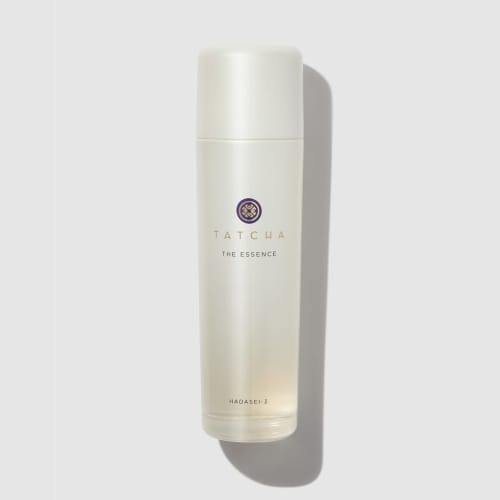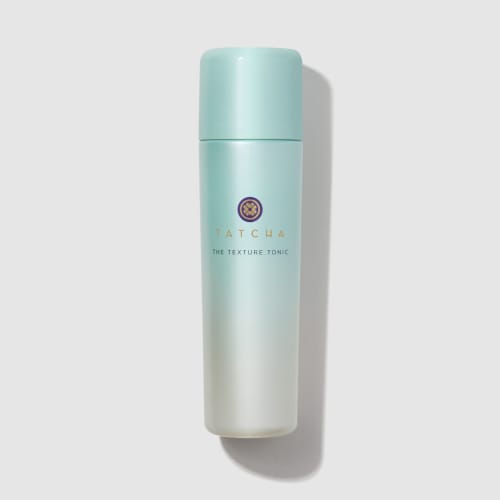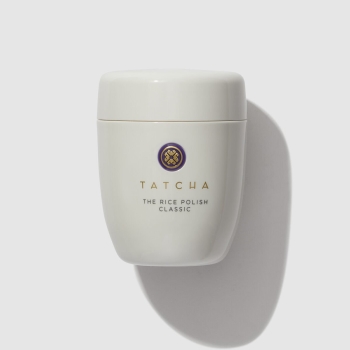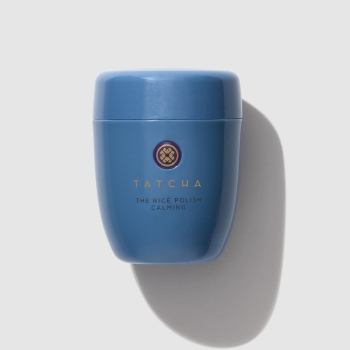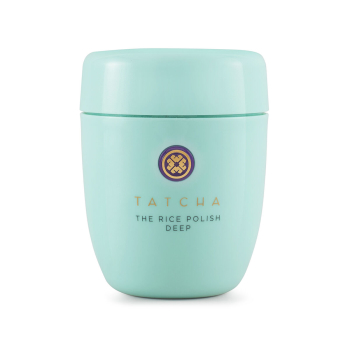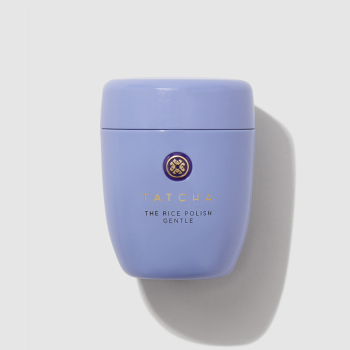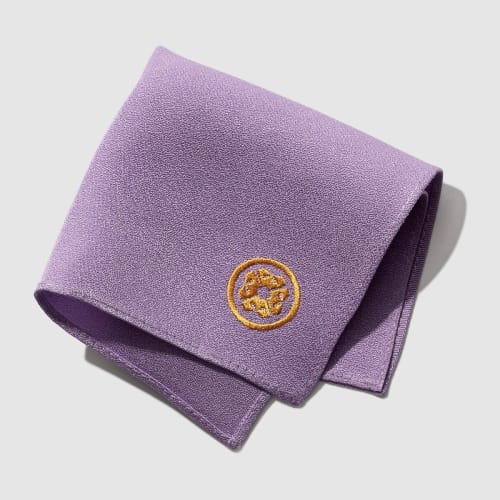Exfoliation is essential for smoother, clearer skin—but should you go chemical or physical? Here’s how they differ, which is best for your skin type, and the top products to try.
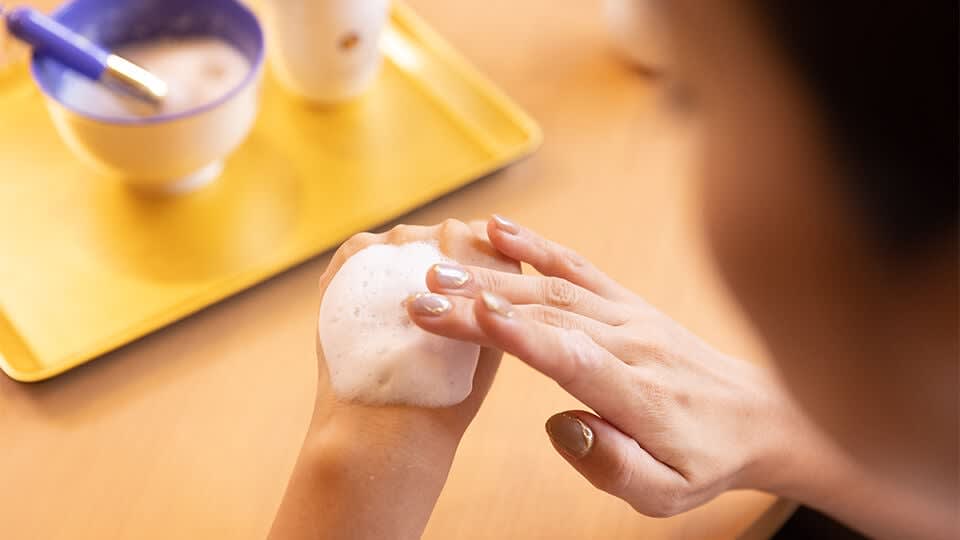
Do you exfoliate? Due to its massive popularity, you’re likely either interested in chemical or physical exfoliants or already use them regularly. After all, the topic has been on a steady incline of interest in the last decade and shows no sign of slowing down. While exfoliation has been proven effective and beneficial, you might be torn on your preferred format: toners vs. liquid exfoliants and chemical exfoliants vs. physical. We explore the differences between the two, which is best for your skin, and the best products of each type.
Why Should You Exfoliate?
Exfoliation is the process of removing dead skin cells from the outer layer of your skin, says the American Academy of Dermatology. This removal of dead skin cells can have numerous benefits, including brighter and smoother-looking skin. Also, as we’ve clinically proven with The Essence, exfoliation can help your other skincare products work more effectively. The dead skin cells prevent some absorption of products and when those dead cells are removed, your serums and moisturizers can penetrate better. Additionally, there is a direct link between exfoliation and a reduction in acne. This is because, as noted in a 2023 study, exfoliation keeps pores clear. In clinical studies, exfoliation has been shown to improve skin texture, reduce the appearance of fine lines and wrinkles, and address mild acne.
Chemical vs. Physical Exfoliants
There are two main methods for at-home exfoliation: physical and chemical. Physical exfoliation products contain a scrub or polish to physically remove dead skin cells, or use a tool, such as a washcloth, brush, or sponge. Chemical exfoliants, also known as liquid exfoliants, use chemicals, such as alpha and beta hydroxy acids, to gently dissolve dead skin cells. Toners, on the other hand, range from gentle to astringent liquids that remove makeup, dirt, oil, and sebum after your cleansing step and rebalance the skin pH.
The method you choose should be guided by your skin type, says the AAD. They suggest dry, sensitive, and acne-prone skin approach exfoliation gently, with a mild chemical or physical exfoliator. Those with oily and resilient skin may have success with stronger chemical and physical exfoliation, notes the AAD. However, no matter what skin type you have, exfoliate with a cautious approach first, assessing how skin reacts with either chemical or physical formats.
Types of Exfoliants & How They Work
Chemical Exfoliants
Chemical exfoliants are beneficial because they help brighten the surface of the skin, eliminate dead skin cells, and curb excess oil for most skin types. The three most common forms of chemical exfoliation are AHA, BHA, and PHA. Here are a few differences between the three.
AHAs
Alpha hydroxy acids are mostly comprised of glycolic, citric, mandelic, and lactic acid. AHAs are proven to address the appearance of skin, targeting dark spots, acne scars, and any other form of hyperpigmentation. AHAs exfoliate the skin’s surface, but they also help ingredients applied afterward penetrate deeper into the layers of the skin (thus boosting the product’s overall effectiveness). This form of acid is great for almost any skin type, although any type of acid should be used cautiously at first.
BHAs
In contrast to AHAs, Beta hydroxy acids are best known for their most popular iteration: salicylic acid. BHAs are synonymous with acne-fighting because they’re oil-soluble and incredibly small molecules, making them capable of penetrating inside the pore, addressing bacteria, sebum, and debris at the root of the problem. BHAs can be irritating for some because they work so deeply and effectively – so use caution when incorporating them into your regime, or consider incorporating products containing BHA alternatives into your skincare routine instead.
PHAs
Polyhydroxy acids are commonly seen as gluconolactone, galactose, and lactobionic acid. While those acid names don’t have quite the star-following of AHAs or BHAs, PHAs have a major benefit over their cousins: less irritation. The molecular size of PHAs is quite large compared to the other acids, making them ideal for sensitive skin. PHAs work very similarly to AHAs, addressing the surface of the skin for a more even-toned appearance.
Physical Exfoliants
Physical exfoliants manually remove dead skin cells and have been shown to stimulate collagen production, unveil smoother skin, and create a luminous, healthy glow. However, they’re often associated with the harsh physical exfoliants of yesteryear that would tear up the skin, leaving it raw, red, and damaged. But not all physical exfoliants are bad. When a formula is approached with expertise and care, a physical exfoliant can be wonderful for all skin types, from sensitive to oily.
Polishes & Manual Scrubs
Polishes, scrubs, exfoliating beads, and more are a few of the most notable physical scrubs available on the market. Ensure you grab an option that’s not irritating, which can be assessed by testing it on the back of the hands first, assessing whether it is irritating or not.
Tools
A physical exfoliation tool can be as simple as a washcloth or as complex as a battery-powered brush with countless exchangeable heads. Whatever option you’re considering, make sure it’s clean. A dirty tool, even a silk washcloth, needs to be freshly cleaned before it touches skin to not add additional bacteria to the skin’s surface.
The Best Way to Exfoliate
The first rule of proper exfoliation is to do no harm—be incredibly gentle to your skin. Exfoliate on freshly cleansed skin, ideally right after you wash the skin (or double cleanse).
Using Physical Exfoliants
For physical exfoliants, use a dime-sized amount and apply it to the face using small, gentle, circular motions. To gently exfoliate your face, keep your movements light—treat your skin to a beautiful caressing movement, similar to the care and preciousness of how you would cleanse a delicate silk garment. Rinse your skin with lukewarm water to avoid irritation.
Using Chemical Exfoliants
When using chemical exfoliators, apply on freshly cleaned, dry skin. Dry skin absorbs less product than damp skin, making the dry-skin application more of a gentle and controlled process. To properly exfoliate your face, use a dime-size amount of product in the palm of your hand or apply it on a cotton round. Press onto the skin and allow it to dry, ideally 30 seconds.
Aftercare
For either method, follow with the rest of your skincare routine, whether that’s an essence, a serum, or just a moisturizer. Exfoliation can be drying to the skin, says the AAD, so apply the best moisturizer for your skin type immediately after exfoliating to keep your skin healthy and hydrated.
How Often to Exfoliate
Beyond finding the best type of exfoliation for you, discovering the right schedule is also half of the battle. How often you exfoliate depends on your skin type and exfoliation method, says the AAD. “Generally, the more aggressive the exfoliation, the less often it needs to be done,” they say. However, it’s vital not to over-exfoliate, as this could lead to red, irritated skin and a potentially compromised skin barrier in need of repair.
Chemical Exfoliant Frequency
Once a week is a good starting point for chemical exfoliation. Some individuals can tolerate more frequent exfoliation, but it’s best to start slowly and gauge your skin's tolerance. If you notice redness or irritation, pause using your chemical exfoliant until your issues subside, and then start with even less product.
Physical Exfoliant Frequency
As with chemical exfoliation, start using physical exfoliants once per week and assess for redness and irritation.
Exfoliation Frequency By Skin Type
As a general guide, here’s how often to exfoliate, depending on your skin type.
- Sensitive skin or aging/mature skin: Ensure that you are extra gentle, exfoliating with a warm, wet (clean!) washcloth or mild chemical exfoliant once a week.
- Oily skin: Those with oily skin will see added benefits of exfoliation. Exfoliation will enhance your skin’s receptiveness to oil-controlling ingredients and banish dulling skin cells, resulting in a clearer, more balanced appearance. Your skin likely will be able to tolerate more exfoliation, perhaps three to five times per week, depending on the intensity of the exfoliant.
- Combination skin: Achieve optimal results by exfoliating your skin two to three times per week.
- Dry skin: Dry and dehydrated skin thrives with consistent exfoliation, ideally one to two times a week. Regular exfoliation will help slough off excessive dead skin cells, allowing the skin to better absorb the beautifully hydrating ingredients that follow, including serums and moisturizers.
Top Chemical & Physical Exfoliants
Choosing a Chemical Exfoliant
Chemical exfoliants are wonderful for almost all skin types and can be more gentle than harsh physical exfoliants. Stick to low-percentage AHA, BHA, or PHA products when first incorporating them into your routine.
The AHA-powered formula was designed for all skin types and is gentle enough to be used daily. It’s specifically formulated to reduce excess oil and sebum, while also improving skin’s moisture levels. The formula has niacinamide to visibly even skin tone and Japanese mugwort to calm visible redness and irritation.
Choosing a Physical Exfoliant
Physical exfoliants famously have a reputation for being harsh and unpredictable. But if using a product with gentle ingredients, like Japanese rice bran, the scrub can be wonderfully gentle yet effective.
This water-activated exfoliant with Japanese ingredients transforms into a creamy, cloud-like foam. While it is generally recommended to use physical exfoliators less often, the non-abrasive formula of The Rice Polishes makes them safe to use daily. Finely ground rice bran and papaya enzymes promote natural skin turnover, while the amino acid-base formula provides effective cleansing without stripping skin of essential moisture or disrupting the skin’s barrier function. This natural exfoliant leaves the skin soft and supple.
Our four different exfoliating formulations will appease a variety of skin types—or you can mix and match, depending on how deep of a scrub you need. Here are our recommendations for the best exfoliating scrub for your skin type.
- Classic Rice Polish: Silk proteins condition and nourish, making the Classic formula ideal for combination to dry skin.
- Calming Rice Polish: Natural Japanese indigo soothes visible irritation, and is perfect for exfoliating sensitive and mature skin.
- Deep Rice Polish: Wild rose helps tighten the look of pores and clarify skin, making it a great fit for exfoliating combination to oily skin.
- Gentle Rice Polish: Licorice root extract prevents flakiness and tightness, and is great for exfoliating dry skin.
Take things ultra gentle with this wonderfully delicate face cloth made of 100 percent pure silk. Made for the most sensitive and precious of skin, it smooths away dull surface cells and leaves skin smooth and lustrous. This luxurious cloth is inspired by the generations of individuals in Japan who would polish their skin with swatches of silk to reveal a lustrous glow.
Physical vs. Chemical Exfoliants: Can You Use Both?
Another thing to consider when it comes to physical vs. chemical exfoliants? They don’t have to be pitted against one another. They both can happily coexist together when starting a skincare routine. A combination of both physical and chemical exfoliation can make your complexion radiant, clearer, and remarkably smoother. Once you find the exfoliation sweet spot between the two, your skin won’t stop glowing.


